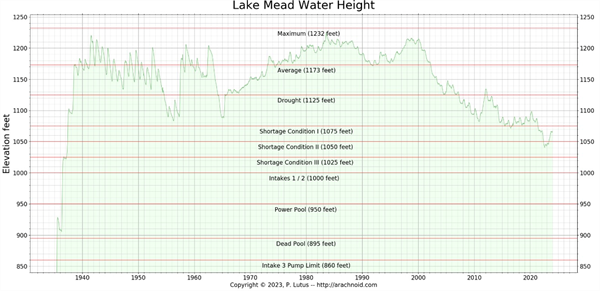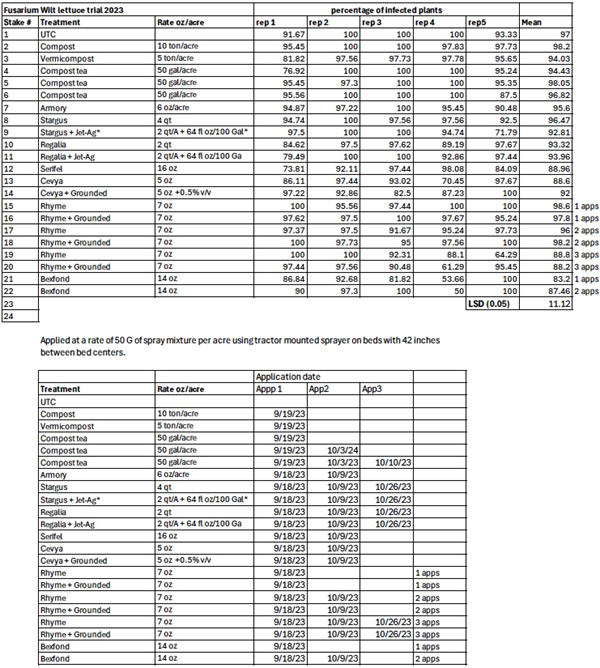Jan 24, 2024
Colorado River Update (2024)
The drought-related pressures on the Colorado River system that have been impacting the entire basin and region for 23 years have slackened briefly due to the wet winter in 2023 that included a good snowpack in the mountains, better rainfall throughout the basin, and improved flows into the river. The current water level at Lake Mead on Hoover Dam is 1,068.25 ft. above sea level on 3 January 2024. That level is 160.75 ft below full pool of 1,229.00 ft. (Figure 1).

In mid-December 2023 representatives from each of the seven Colorado River Basin states met in Las Vegas, NV during the annual Colorado River Water Users Association conference. The focus of current discussions among the basin states is to negotiate a new compromise for the guidelines of use under conditions of water shortage. These new guidelines will go into place at the end of 2026. The immediate goal is to draft proposals by March 2024.
The negotiations are incentivized by having the opportunity for the post-2026 guidelines being developed by the basin states themselves as opposed to litigation or legislation. A major concern driving this process among the basin states that basin state representatives should be able to do this better than turning the process over to people and entities that have less direct familiarity with the situation and no real “skin” in the game.
The 1963 decision by the Supreme Court of the United States in of the Arizona v California case directed the federal authority on the management of the Colorado River to the Department of the Interior and the Bureau of Reclamation (BoR). However, the basin states have the chance to negotiate their future management plans on the Colorado River. If they fail to do so in the allotted time, the process will be managed by the federal government.
The basic water budget challenge is based on the following basic statistics:
- The current water budget on Colorado River allocations is 16.5 million acre-feet (maf)/year.
- Average annual flow on the Colorado River from 1906-2017 was 14.8maf/year.
- The average annual flow between the years 2000 - 2018 has been approximately 12.4maf/year.
- That is 16% lower than the 20th century average flow.
- It is estimated that 1.5 maf/year is lost due to evaporation and system loss.
- Thus, the 4 maf/year target reduction that has been identified by the BoR is basically the difference between the 16.5 maf/year allocated versus the 12.4 maf/year average flow in the first two decades of this century.
Some notable progress is being made for conservation of Colorado River water with agreements among lower basin states and tribes that will conserve more than 1.5maf/year through 2026. For example, California water agencies have recently agreed to conserve up to 643,000 acre-feet/year through 2025. The Quechan Indian Tribe has reached an agreement with federal water managers to save up to 39,000 acre-feet/year through 2025. Arizona has agreed to conserve up to 348.00 acre-feet/year through 2026. All these temporary agreements are being supported with federal funding.
With agriculture responsible for 70% of the diversions on the Colorado River, these negotiations are extremely important for the future of agriculture in this region and our capacity to support high population densities that are now common and rapidly growing.
These types of negotiations are certainly challenging in dealing with a limited water supply and a lot of demand. There are many competing interests involved. Yet, we are confident that the representatives we have will be able to work this out and come to a set of functional agreements.
To contact Jeff Silvertooth go to:
silver@ag.arizona.edu











